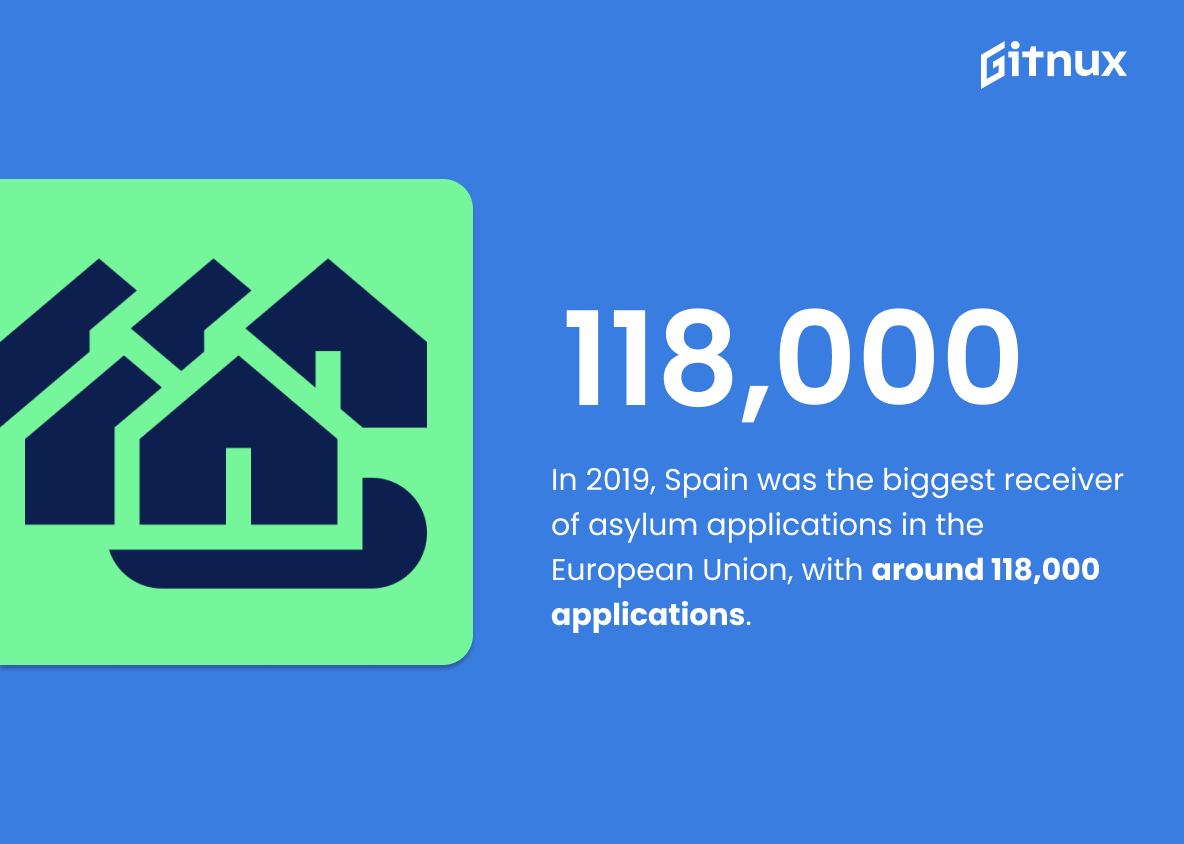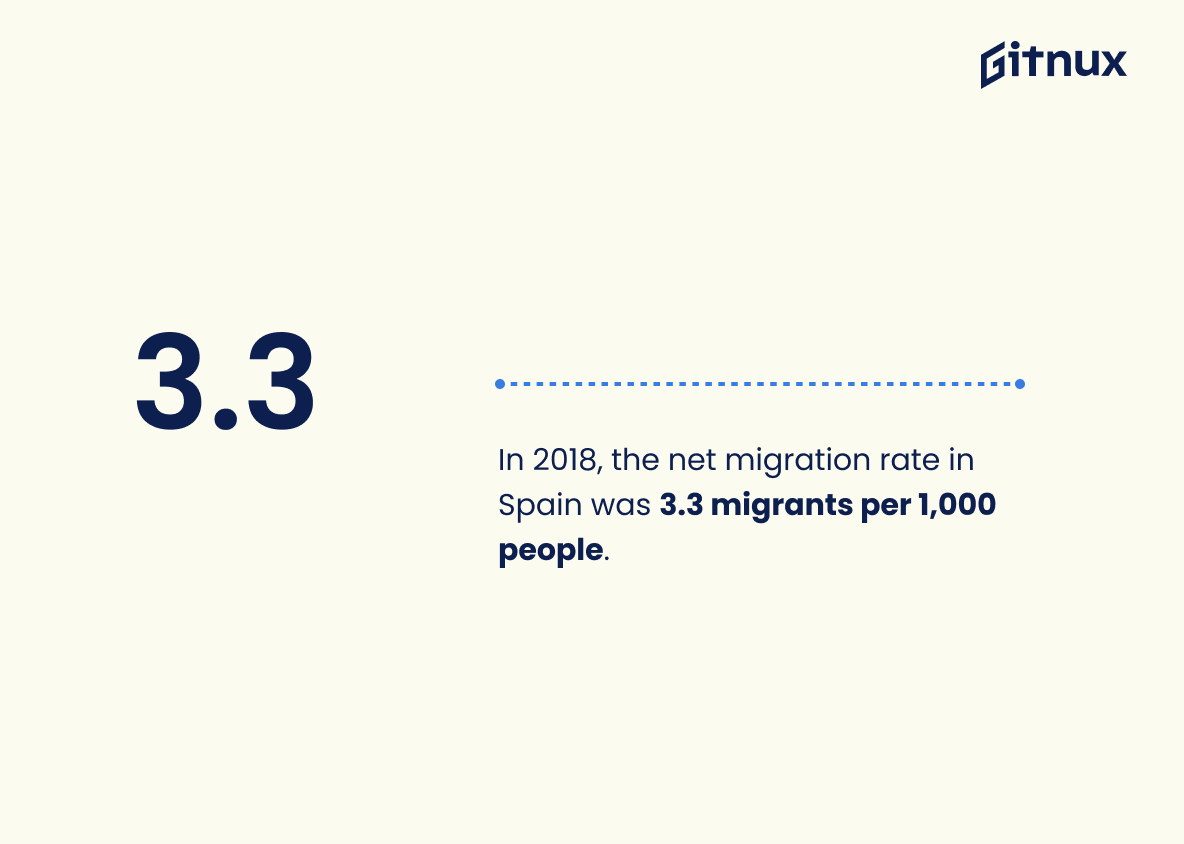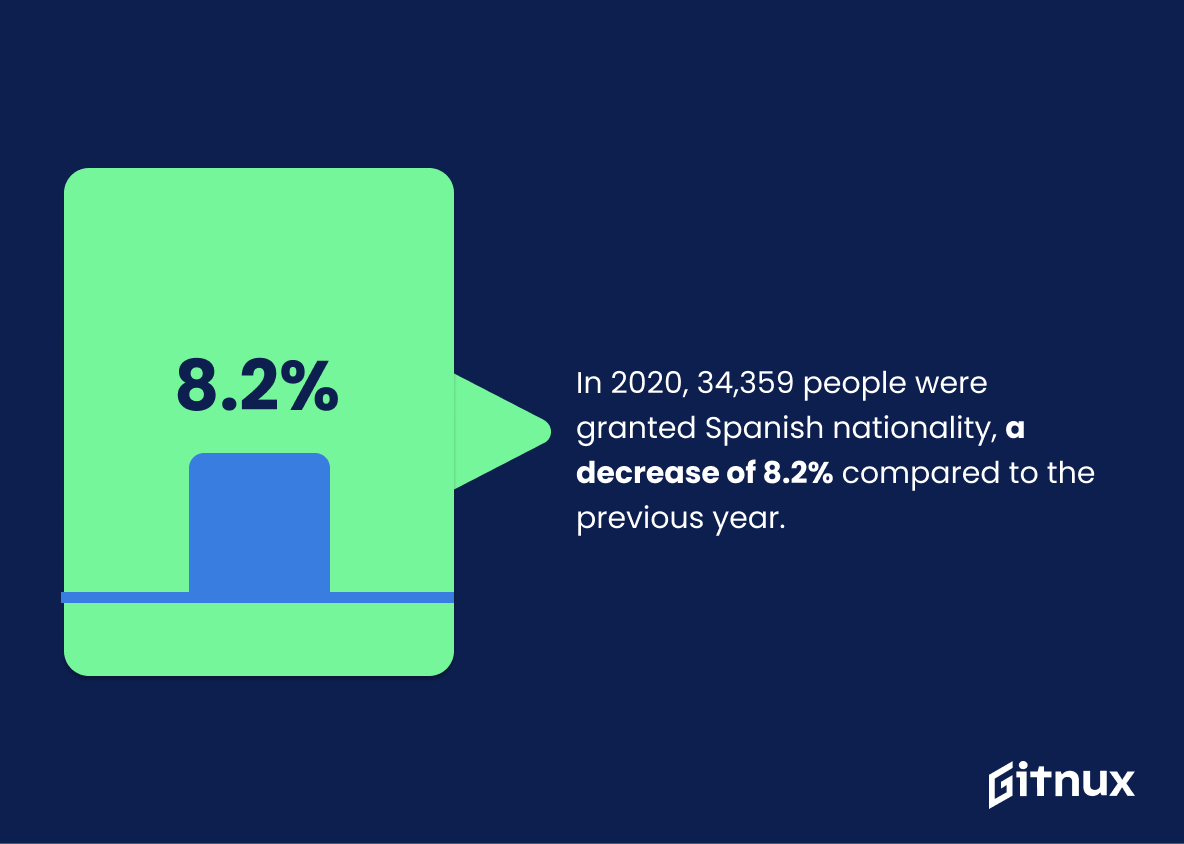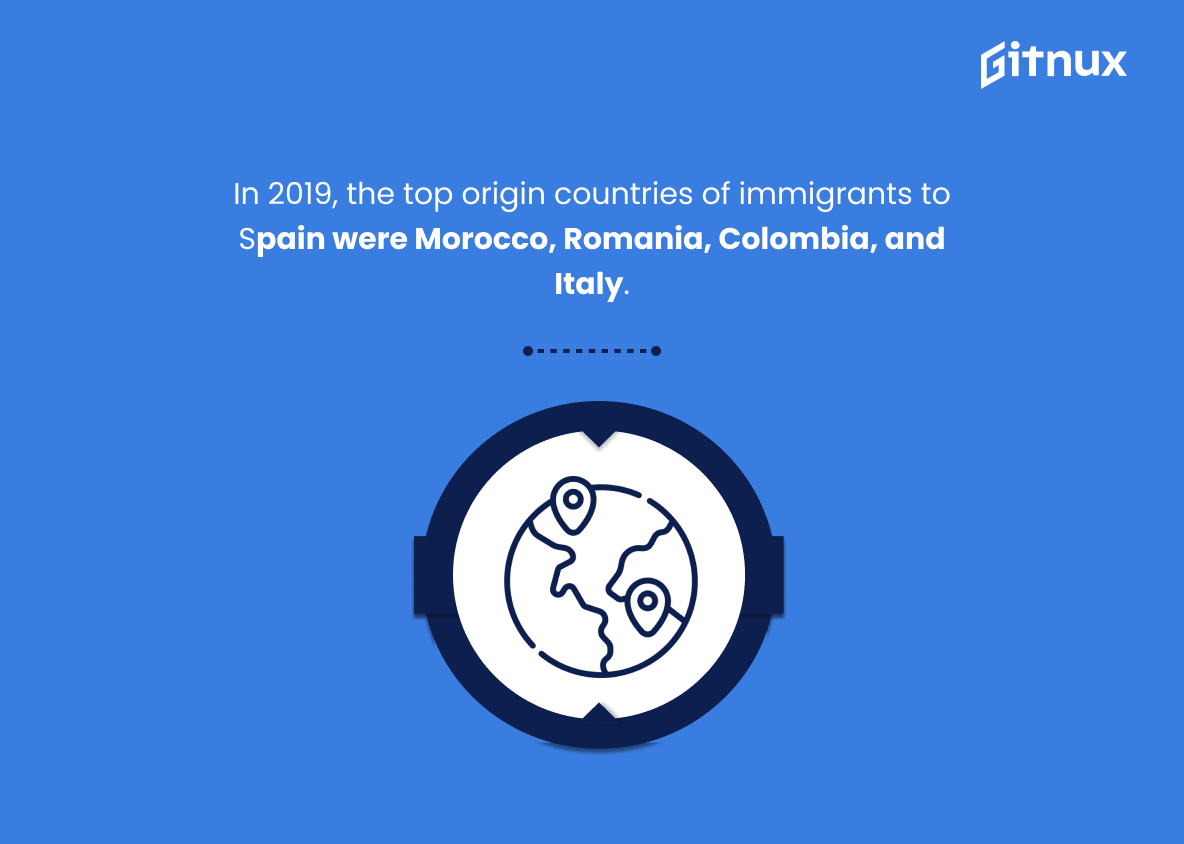The movement of people across borders has been a part of human history for centuries. In recent years, the number of Spanish immigrants in different countries around the world has increased significantly. This blog post will explore some key statistics about Spanish immigration to and from various countries, including Spain itself, as well as other European nations such as France and the United Kingdom; Latin American countries like Colombia; and North America’s largest economy – The United States.
We’ll look at data on total immigrant populations in each country, top origin countries for migrants to Spain, asylum applications received by Spain compared with other EU member states, unemployment rates among Spanish immigrants in the US and more. By understanding these figures we can gain insight into how migration patterns have changed over time – both within Europe but also between continents – providing us with an overview of current trends that are shaping our global society today.
Spanish Immigration Statistics Overview
In 2019, there were 1,480,109 immigrants from Latin America living in Spain.
This statistic is a powerful indicator of the impact Latin American immigrants have had on Spain. It shows that a significant portion of the population is made up of immigrants from Latin America, demonstrating the importance of this group to the country’s culture and economy. Furthermore, it highlights the need for Spain to continue to provide support and resources to these immigrants in order to ensure their successful integration into Spanish society.
The total immigrant population in Spain in 2020 was about 6,756,178, representing 14.4% of the total population.
This statistic is a powerful indicator of the impact of immigration on Spain’s population. It shows that immigrants make up a significant portion of the country’s population, and that immigration is an important factor in the country’s growth and development. This statistic is especially relevant in a blog post about Spanish Immigration Statistics, as it provides a clear picture of the current state of immigration in Spain.
In 2020, the highest number of immigrants in Spain were from Morocco, with approximately 788,800 Moroccan immigrants.
This statistic is a telling indication of the current state of Spanish immigration. It reveals that Morocco is the leading source of immigrants to Spain, with a staggering 788,800 Moroccan immigrants in 2020. This highlights the importance of understanding the dynamics of immigration from Morocco to Spain, and the implications it has for the Spanish economy and society.
In 2019, Spain was the biggest receiver of asylum applications in the European Union, with around 118,000 applications.
This statistic is a telling indication of the current state of immigration in Spain. It highlights the fact that Spain is a major destination for those seeking asylum in the European Union, with a significant number of applications being made in 2019. This statistic is a powerful reminder of the importance of understanding the complexities of immigration in Spain and the need for effective policies to ensure the safety and security of those seeking refuge.
In 2019, approximately 38% of immigrants in Spain were from other EU countries.
This statistic is a telling indication of the current state of immigration in Spain. It reveals that a significant portion of immigrants in Spain are coming from other EU countries, which suggests that Spain is becoming an increasingly attractive destination for immigrants from within the European Union. This could have implications for the Spanish economy, as well as for the social and cultural dynamics of the country.
In 2018, the net migration rate in Spain was 3.3 migrants per 1,000 people.
This statistic is a telling indicator of the current state of immigration in Spain. It reveals that the country is experiencing a net influx of migrants, with 3.3 people entering the country for every 1,000 people. This influx of people is likely to have a significant impact on the country’s population, economy, and culture. As such, this statistic is an important piece of information to consider when discussing Spanish immigration statistics.
In 2020, 34,359 people were granted Spanish nationality, a decrease of 8.2% compared to the previous year.
This statistic is a telling indication of the current state of Spanish immigration. It reveals that the number of people granted Spanish nationality has decreased significantly from the previous year, suggesting that the country is becoming less welcoming to immigrants. This could have a major impact on the country’s economy, as fewer immigrants could mean fewer people contributing to the workforce and fewer people paying taxes. Additionally, it could also have a negative effect on the country’s culture, as fewer immigrants could mean fewer people bringing in new ideas and perspectives.
In 2019, the top origin countries of immigrants to Spain were Morocco, Romania, Colombia, and Italy.
This statistic is significant in understanding the current state of Spanish immigration. It provides insight into the countries that are sending the most immigrants to Spain, which can help inform policy decisions and provide a better understanding of the cultural and economic impacts of immigration. Additionally, it can help to identify potential areas of focus for outreach and support for immigrants, as well as potential areas of concern for the Spanish government.
In 2020, 47.3% of the total immigrant population in Spain were men, and 52.7% were women.
This statistic is a telling indication of the gender dynamics of immigration in Spain. It reveals that the majority of immigrants in Spain are women, which could suggest that women are more likely to migrate to Spain than men. This could be due to a variety of factors, such as economic opportunities, family reunification, or even cultural norms. Understanding the gender dynamics of immigration in Spain is essential for understanding the overall immigration picture in the country.
Between 2008 and 2018, there was a 28% decrease in the number of Spanish immigrants living in the UK.
This statistic is a telling indication of the changing landscape of Spanish immigration to the UK. It highlights a significant decrease in the number of Spanish immigrants living in the UK over the past decade, which could be attributed to a variety of factors such as economic conditions, political policies, or cultural changes. This statistic is an important piece of information to consider when discussing Spanish immigration statistics.
In 2019, approximately 9% of Spanish immigrants in the United States were unemployed.
This statistic is a telling indication of the struggles that Spanish immigrants face in the United States. It highlights the difficulties they face in finding employment and the need for more resources to help them gain access to job opportunities. It also serves as a reminder of the importance of providing support and assistance to Spanish immigrants in order to ensure their successful integration into American society.
In 2020, the largest age group of Spanish immigrants in the United States was the age group 35-44, representing 27% of Spanish immigrants.
This statistic is a telling indication of the current state of Spanish immigration to the United States. It reveals that the majority of Spanish immigrants are in the prime of their lives, suggesting that they are likely to be highly motivated and ambitious individuals. Furthermore, the fact that this age group makes up such a large proportion of Spanish immigrants indicates that there is a significant influx of Spanish immigrants into the United States. This is an important factor to consider when discussing Spanish immigration statistics.
47.4% of Spanish immigrants in the United States had a university degree in 2019.
This statistic is a testament to the educational achievements of Spanish immigrants in the United States. It highlights the fact that a significant portion of Spanish immigrants have attained a university degree, indicating that they are well-educated and have the potential to contribute to the American economy. This statistic is an important reminder that Spanish immigrants are an asset to the United States and should be welcomed and supported.
In 2019, 29.2% of Spanish immigrants in the United States worked in management, business, science, or arts occupations.
This statistic is a testament to the success of Spanish immigrants in the United States. It shows that a significant portion of Spanish immigrants are employed in high-level occupations, indicating that they are well-educated and have the skills necessary to succeed in the American workforce. This statistic is a powerful reminder of the positive contributions that Spanish immigrants make to the United States.
In 2020, Spanish immigrants made up 0.3% of the total foreign-born population in the United States.
This statistic is a powerful reminder of the impact Spanish immigrants have had on the United States. It shows that despite making up a relatively small portion of the total foreign-born population, Spanish immigrants have still had a significant impact on the country. This statistic is an important part of understanding the history and current state of Spanish immigration in the United States.
Between 2000 and 2030, it is projected that one-third of Spain’s population growth will be due to immigration.
This statistic is a powerful indicator of the impact immigration is having on Spain’s population growth. It highlights the importance of immigration in the country’s future, and the need for policies that ensure immigrants are welcomed and integrated into Spanish society. It also serves as a reminder of the importance of understanding the dynamics of immigration in order to ensure that Spain’s population growth is sustainable and beneficial for all.
Conclusion
The data presented in this blog post paints a comprehensive picture of Spanish immigration both within and outside of Spain. It is clear that the number of Spanish immigrants has been steadily increasing over the past few years, with an estimated 114,000 living in the United States alone as of 2020. Additionally, it appears that Morocco is currently one of the top origin countries for immigrants to Spain, while France hosts more than 226,000 Spaniards abroad. Furthermore, statistics show that 47% percent have university degrees and 29% work in management or related fields; however 9% are unemployed which could be attributed to economic instability due to COVID-19 pandemic restrictions. Finally, projections suggest that by 2030 one third of population growth will be due to immigration into Spain from other countries around Europe and Latin America.
References
0. – https://www.www.pewglobal.org
1. – https://www.www.pewresearch.org
2. – https://www.www.cepal.org
3. – https://www.www.ine.es
4. – https://www.www.nature.com
5. – https://www.www.voanews.com
6. – https://www.datosmacro.expansion.com
7. – https://www.data.worldbank.org
8. – https://www.www.migrationpolicy.org


















